- Freshman undergrad design classes - EPICS
- Senior Design - work with actual clients on a project.
- Graduate work - write a book on a project.
- Job - work on projects
- The engineering method
- Open-ended problem solving techniques
- Teamwork
- Technical communication - written and oral
- Application of core class subjects.
Thomas Edison:
Thomas Edison was an inventor who accumulated 2,332 patents worldwide for his inventions. Edison invented everything from radios & electric lamps to the tattoo machine. Most of Edison’s inventions were not completely original but improvements of earlier inventions. Edison also created the first industrial research and development lab.
~~~~~~~~~~~~~~~~~~~~~~~~~~~
ENGR1304 Project:
Follow the Engineering Design Process to create something!
The 10 stage Design Process: PGR.BAT.DCCR.
1. Identify the problem/product innovation
2. Define the working criteria/goals
3. Research and gather data
4. Brainstorm/generate creative ideas
5. Analyze potential solutions
6. Develop and test models
7. Make the Decision
8. Communicate and specify
9. Implement and commercialize
10. Post-implementation review, assessment, refine
1. Clearly Define the Problem
Identify Constraints (time, money, resources, personnel)
2. List specific goals
Bad Example: "Build a better highway" - not specific
Good Example: "Expand I-405 to accommodate an AADT (Average Annual Daily Traffic) of 400,000 with the least invasive design to surrounding communities. Provide safe accommodations for large commercial vehicles, an HOV lane, and small single occupant commuters." - clear and specific
4. Brainstorm ideas:
* The more ideas you generate, the better. Quantity not quality.
5. Analyze
* Organize ideas: Group similar ideas, eliminate duplicates
* Rate and rank ideas using a decision table
* Post your best ideas in online forums, and consider public feedback.
* Post your best ideas in online forums, and consider public feedback.
- create a survey to send to friends / family
https://www.surveymonkey.com/
- post idea on a general website like
https://www.quirky.com/
http://rockethub.com/
https://www.kickstarter.com
- Different web communities specialize in different areas. Choose a site focusing on your project's area with your target audience.
6. Test
Physically test initial rough prototypes
https://www.surveymonkey.com/
- post idea on a general website like
https://www.quirky.com/
http://rockethub.com/
https://www.kickstarter.com
- Different web communities specialize in different areas. Choose a site focusing on your project's area with your target audience.
6. Test
Physically test initial rough prototypes
Design considerationsWhat material should it be made out of?
Corrosion resistant?
Is ductility or strength more important?
Thermal & electrical conductivity
Thermal expansion, tolerances
Weight
Manufacturability - how easy is it to make?
Difficulty in creating each part, and assembling parts together.
(Efficient designs minimize part counts, design parts with self-locating and fastening features, minimize reorientation of parts during assembly, use standard modular designs.)
Manufacturing processes: forging & forming, machining, 3D printing
2. Goals: Natural, low maintenance, sturdy, weather appropriate
3. Research: Read comments and complaints on existing bird feeders,
"This feeder is not squirrel proof. Since the squirrels could not get to the seeds via the feeding ports, they simply chewed their way through the plastic housing at the base of the feeder and let the seed flow to the ground. Both feeders were destroyed the first day I put them up. Can I get my money back?"
"Shoddy construction, limited feed capacity and all around poor craftsmanship.
I would not recommend this feeder to anyone. The anchor screws were driven into the wrong place and the materials are so flimsy as to be almost brittle"
Create one large sketch, and one "Orthographic Views" sketch showing top, front, and side views
Section 3: Goals and Schedule
Define the working criteria and goals of the project.
Goals should be S.M.A.R.T.
Schedule: Consider creating a Gantt chart outlining milestones and time frames for achieving your goal.
Section 4: Diagrams
Set of working drawings
- Parts list, materials selection, dimensions for each part, exploded view, and presentation. By the end of the semester you will know how to create this in CAD.
Section 5: Review and Commercialize
Publication Plan - Define your target audience, research web communities, and decide how and where to make your project public if desired!
You can choose to participate in an online challenge such as:
https://grabcad.com/challenges
You can post your idea to a 3D printing or CAD community such as:
http://www.thingiverse.com/
Participate in a craftsman or DIY forum such as http://www.instructables.com/
You can choose to explore a crowd-funding platforms such as kickstarter, or a magazine - http://www.yankodesign.com/random-designs/
Lots of neat communities and opportunities out there!
https://www.protolabs.com/about-us/cool-idea-award/
https://quirky.com/
http://www.yankodesign.com/random-designs/
Keep it simple? Just post your 3-D printed creation on ebay.
Turn in your final project by sending a link to where your project is posted on the web, or turn in a traditional project report.
For those who choose to join online communities, your project will have a life beyond the confines of this course - I hope you will enjoy watching it grow as others take interest, modify, and use it!
Brainstorming help:
Random noun generator:
http://www.desiquintans.com/noungenerator.php
Generate 5-10 random nouns,
Think about the engineering products that go along with that noun.
Example:
random noun: dog - brainstorm "pet products", leashes, cages, automatic dog walking machine, automatic pet feeders, pet toy that trains pet, pet monitoring devises, etc. etc.
random noun: ocean - brainstorm: boats, oil rigs, water purification technologies, typhoon flooding control, equipment for vacationing at the beach...
Association brainstorming: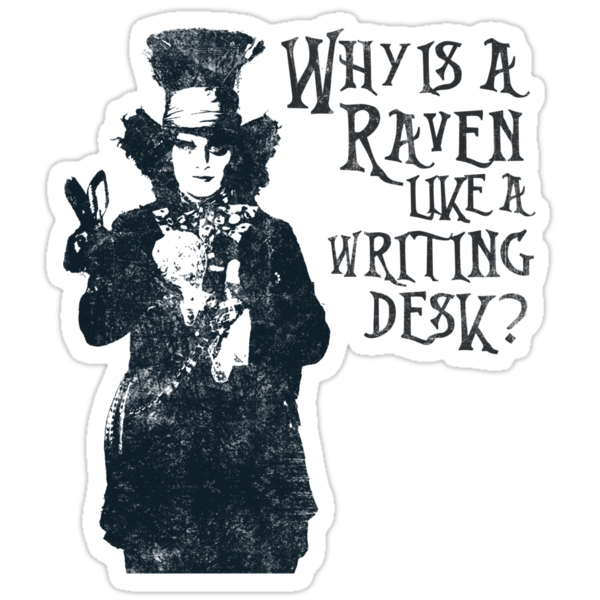
Choose two random nouns, combine them to create something new.
example:
"picture, spark" - birthday cake candle with powdered colorants to produce colored patterns as they burn.
"Swing, Trombone" - make a swing that creates music while in use.
"garden, spaghetti" - create a kitchen compost bin to recycle food waste & fertilize your garden.
"hoop, fish" - make a modified fish aquarium lid that allows your fish to jump out of the water through hoops.
Google Image Search:
search terms like "innovative machines", "best inventions", "making something from trash", etc.
List as many crazy ideas as possible, then pick something that looks fun.
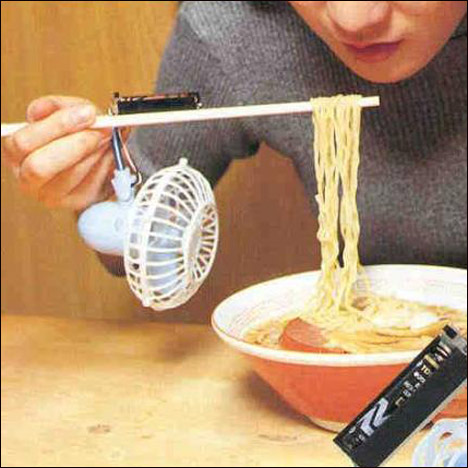
Design organizers
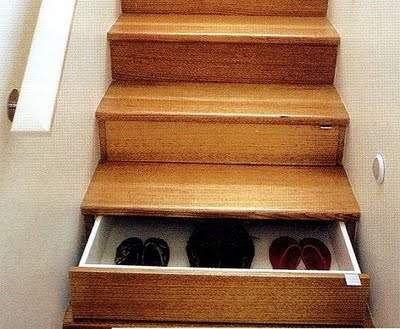
Games:
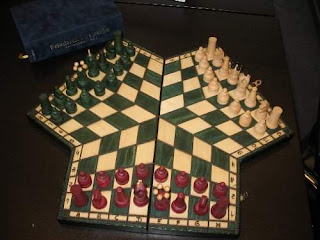
Cost, life expectancy, functionality, environmental concerns, marketability, etc.
7. Decide which idea to pursue
7. Decide which idea to pursue
Further develop and communicate the best ideas with sketches, professional drawings, prototypes, memo's and reports.
8. Communicate:
Hold regular team meetings, modify Gantt chart as needed, gateway reviews, checkpoints, milestones.
Explain and Sell your idea to the public, incorporate user feedback. Documentation: Technical manuals, user guides, handbooks, instruction booklets, test results, presentation materials, charts, graphs, technical reports, packing and shipping instructions, etc. etc.

9. Commercialize
Production!
Design Implementation, Construction & full scale manufacturing
Hold regular team meetings, modify Gantt chart as needed, gateway reviews, checkpoints, milestones.
Explain and Sell your idea to the public, incorporate user feedback. Documentation: Technical manuals, user guides, handbooks, instruction booklets, test results, presentation materials, charts, graphs, technical reports, packing and shipping instructions, etc. etc.

"Engineers
often manipulate society’s perceived wants – engineers create what they
think an informed society should want based on their knowledge of what
an uninformed society thinks it wants."
9. Commercialize
Production!
Design Implementation, Construction & full scale manufacturing
10. Review and Refine
What will version 2.0 look like? CER - cold eyes review
What will version 2.0 look like? CER - cold eyes review
Assess maintenance, reliability, user response.
Human performance improvement (HPI) - improve training, procedures & work practices
~~~~~~~~~~~~~~~~~~~~~~~~~~~~~~~~~~~~~~~~~~~~~
Project:
Week #1: Come up with 3 good ideas, and post your ideas in the class discussion forums. Read the ideas of others, comment and interact in the discussion forums, then join a project team.
Week #2: Decide what project to work on, start with a good sketch of your favorite brainstormed idea.
Individual and group project -
Individual project: CAD software can be learned drawing up anything you want. Unit objectives will cover: sketching, orthographic projections, pictorials, sectional and auxiliary views, dimensioning, tolerances, design for manufacturability, materials selection, fastener and connection selections, parts lists etc. etc. We will combine working through traditional worksheets, as well as applying concepts to personally chosen projects.
Group Project: One of the course objectives is to experience working in a team on a project. It takes some really good communication skills to make one puzzle piece that perfectly fits into the puzzle pieces others have created. Thankfully it is now much easier to share files and work together than it used to be. Groups are great at catching one another's mistakes, and really polishing a product using the combined expertise that comes from unique and diverse backgrounds. It can also be really fun to work together!
Project Sketch Example:
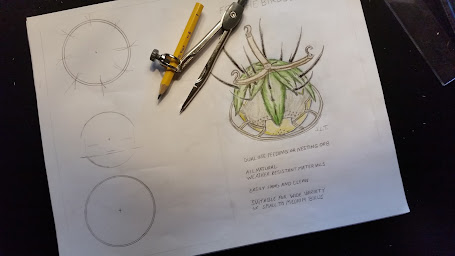
Week #1: Come up with 3 good ideas, and post your ideas in the class discussion forums. Read the ideas of others, comment and interact in the discussion forums, then join a project team.
Week #2: Decide what project to work on, start with a good sketch of your favorite brainstormed idea.
Individual and group project -
Individual project: CAD software can be learned drawing up anything you want. Unit objectives will cover: sketching, orthographic projections, pictorials, sectional and auxiliary views, dimensioning, tolerances, design for manufacturability, materials selection, fastener and connection selections, parts lists etc. etc. We will combine working through traditional worksheets, as well as applying concepts to personally chosen projects.
Group Project: One of the course objectives is to experience working in a team on a project. It takes some really good communication skills to make one puzzle piece that perfectly fits into the puzzle pieces others have created. Thankfully it is now much easier to share files and work together than it used to be. Groups are great at catching one another's mistakes, and really polishing a product using the combined expertise that comes from unique and diverse backgrounds. It can also be really fun to work together!
Project Sketch Example:

Use the engineering method to start your project
1. Problem: Create a squirrel-proof bird feeder / bird house
2. Goals: Natural, low maintenance, sturdy, weather appropriate
3. Research: Read comments and complaints on existing bird feeders,
"This feeder is not squirrel proof. Since the squirrels could not get to the seeds via the feeding ports, they simply chewed their way through the plastic housing at the base of the feeder and let the seed flow to the ground. Both feeders were destroyed the first day I put them up. Can I get my money back?"
"Shoddy construction, limited feed capacity and all around poor craftsmanship.
I would not recommend this feeder to anyone. The anchor screws were driven into the wrong place and the materials are so flimsy as to be almost brittle"
"Well it was squirrel proof as they claim, and it was also bird proof..."
4. Brainstorm: How do natural plants deter pests? Thorns, camouflage,
Analyze: Natural bird nests and habitats, environmentally friendly building materials, bird foods and size of birds
Test: Which size works best? Which color? Internal temperature and humidity of bird house through hot summer days, stability in wind and rain
5. Decide: How large should birdhouse be? How large should the perch be? Thorns? Material?
Communicate: Marketing, researching, testing, design, 3D printing, publishing
Commercialize: Build and sell!
Review: What improvements should be made? More rain proof, easier to hang, multiple models for different climates and birds, etc.
Create one large sketch, and one "Orthographic Views" sketch showing top, front, and side views
After deciding on project idea, create a project proposal. Explain your idea, research similar products, find areas for improvement, sketch preliminary dimensions.
Heading: should include class name, date, project title, and the name of everyone working on the project with their contribution if working in a group
Section 1: Introduction
Introduce your idea. Discuss all of the different ideas you considered, and justify why you chose what you did. What problem did you solve? Who is your target audience? Is it useful? Creative? Needed? Cost efficient? Post your decision table.
Section 2: Research and Development
Introduce your idea. Discuss all of the different ideas you considered, and justify why you chose what you did. What problem did you solve? Who is your target audience? Is it useful? Creative? Needed? Cost efficient? Post your decision table.
Section 2: Research and Development
Research: Gather background information, save information to create a reference section. How is your project design an improvement over existing models?
Development: Discuss different models of this product, and how the designs have evolved through time.
Section 3: Goals and Schedule
Define the working criteria and goals of the project.
Goals should be S.M.A.R.T.
Specific
Measurable
Attainable
Relevant
Time bound
Schedule: Consider creating a Gantt chart outlining milestones and time frames for achieving your goal.
Section 4: Diagrams
Set of working drawings
- Parts list, materials selection, dimensions for each part, exploded view, and presentation. By the end of the semester you will know how to create this in CAD.
Section 5: Review and Commercialize
Publication Plan - Define your target audience, research web communities, and decide how and where to make your project public if desired!
You can choose to participate in an online challenge such as:
https://grabcad.com/challenges
You can post your idea to a 3D printing or CAD community such as:
http://www.thingiverse.com/
Participate in a craftsman or DIY forum such as http://www.instructables.com/
You can choose to explore a crowd-funding platforms such as kickstarter, or a magazine - http://www.yankodesign.com/random-designs/
Lots of neat communities and opportunities out there!
https://www.protolabs.com/about-us/cool-idea-award/
https://quirky.com/
http://www.yankodesign.com/random-designs/
Keep it simple? Just post your 3-D printed creation on ebay.
Turn in your final project by sending a link to where your project is posted on the web, or turn in a traditional project report.
For those who choose to join online communities, your project will have a life beyond the confines of this course - I hope you will enjoy watching it grow as others take interest, modify, and use it!
~~~~~~~~~~~~~~~~~~~~~~~~~~~~~~~~~~~~~~~~~~~~~~~~~~
Example Project ideas:
* Master-planned community layout - how would you improve Kingwood?
* Innovative Playground - safe, fun, accessible to disabled, young, and old. (Why not make a playground for adults? Slides large enough for parents to join their kids in the fun?)
* Amusement park - create rides, park layout, etc.
* Ultimate office - Ultimate kitchen - Ultimate Game Room Ultimate Water park -
*Desk organizer
*Chess set or other game
*Tiny House
*Camping equip
*Create a Toy
*3D puzzles
*Desk organizer
*Chess set or other game
*Tiny House
*Camping equip
*Create a Toy
*3D puzzles
Choose something:
* That you can create technical drawings for in your field of interest
* That has no upper bound on what you can add to it.
Brainstorming help:
Random noun generator:
http://www.desiquintans.com/noungenerator.php
Generate 5-10 random nouns,
Think about the engineering products that go along with that noun.
Example:
random noun: dog - brainstorm "pet products", leashes, cages, automatic dog walking machine, automatic pet feeders, pet toy that trains pet, pet monitoring devises, etc. etc.
random noun: ocean - brainstorm: boats, oil rigs, water purification technologies, typhoon flooding control, equipment for vacationing at the beach...
Association brainstorming:

Choose two random nouns, combine them to create something new.
example:
"picture, spark" - birthday cake candle with powdered colorants to produce colored patterns as they burn.
"Swing, Trombone" - make a swing that creates music while in use.
"garden, spaghetti" - create a kitchen compost bin to recycle food waste & fertilize your garden.
"hoop, fish" - make a modified fish aquarium lid that allows your fish to jump out of the water through hoops.
Possible Categories for your invention:
- Educational equipment
- Recreational equipment, toys, and games.
- Pet and animal care- Educational equipment
- Recreational equipment, toys, and games.
- Yard care
- Home care
- Child care
- Safety or security device
- Time saving device
- Energy saving device
- Energy saving device
- Water saving device
- New musical instrument
- New kind of transportation (bike, skates, shoes?)
-New tool
- New kind of transportation (bike, skates, shoes?)
-New tool
- Anything that simplifies life
- Recycling, make something from trash
Google Image Search:
search terms like "innovative machines", "best inventions", "making something from trash", etc.
List as many crazy ideas as possible, then pick something that looks fun.

Design organizers

Games:

Everything that is out there can be just a little bit better. Choose something fun, and make it better!







